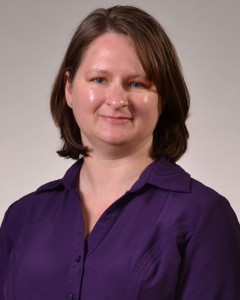
Getting children to follow directions has long proven a challenge for early childhood educators. Fittingly, a CYFS research team is examining how well those very teachers do the same.
Dawn Davis, a CYFS doctoral student affiliate, is leading a study to explore how closely the implementation of literacy curriculum in a Head Start program adheres to the curriculum’s design. Davis is assessing this match between plan and practice – commonly called “fidelity” – to determine its influence on children’s oral language, alphabet knowledge, print awareness and other literacy skills.
Measuring this fidelity should help Davis and her colleagues understand how much of the curriculum’s impact – and room for growth – owes to its design versus its implementation, she said.
“We want to be able to understand more about what’s actually happening,” said Davis, who received a Head Start Graduate Research Grant from the Administration for Children, Youth and Families. “I think fidelity really gives us the confidence to say that we know all kids received the same experience – or, if the experience varied, that we can see what effect it had.”
Davis, whose collaborators include CYFS faculty affiliates Helen Raikes, Tiffany Hogan and Lisa Knoche, also aims to establish whether teachers’ perceptions of the curriculum influence how closely they follow it. She said the team expects to find that teachers with the highest opinion of the curriculum demonstrate the greatest fidelity to it – and that this fidelity correlates with children’s greatest gains in literacy skills.
“It just makes sense that, if the curriculum matches how teachers feel children learn best,” Davis said, “and they’re seeing an impact in their children that they attribute, in part, to the curriculum, that they are much more likely to follow it.”
To test her hypotheses, Davis is analyzing data from more than 200 children and 11 teachers who participated in the Early Reading First intervention at a rural Midwestern Head Start program. In addition to the standard battery of surveys, observations and child assessments, Davis emphasized that the team is reviewing teacher interviews for reflections on the literacy curriculum and their implementation of it.
“Asking questions and getting feedback to better understand how the intervention works is important,” noted Davis, who said that logistics and differing interpretations of the curriculum act as common threats to its fidelity. “Sometimes they’re simply not able to implement an intervention the way it’s designed. Getting the teacher perspective is one way to say, ‘Well, maybe this is what’s really contributing to these differences in results that we see.'”
According to Davis, the ongoing study exemplifies a growing awareness of the realities involved in translating research into practice – and another step toward accounting for those realities.
“Not every teacher is the same; not every family is the same; not every school is the same,” she said. “Keeping track of all those differences is hard to do, but it’s important. Hopefully, fidelity continues to become a standard component as these types of projects move forward.”